Addressing
How do we scale the ideas of routing and forwarding to the scale of the entire internet?
This is mainly resolved with the domain of addressing.
Early Addressing Schemes #
In the early internet, each network had its own identifier, and each host within a network had its own identifier. Naturally, any host could be addressed using two numbers in the form networkID.hostID.
As a result of this hierarchical addressing scheme, each internal router only needs to store information about the hosts within the same network, as well as a gateway address to a border router connected to external networks.
IPv4 #
In the modern internet, addresses are assigned using the IPv4 scheme, which is typically represented in the dotted quad format (XXX.XXX.XXX.XXX).
IPv4 addresses are 32-bit, and
Classful Addressing #
In the early internet, there were three main classes of networks:
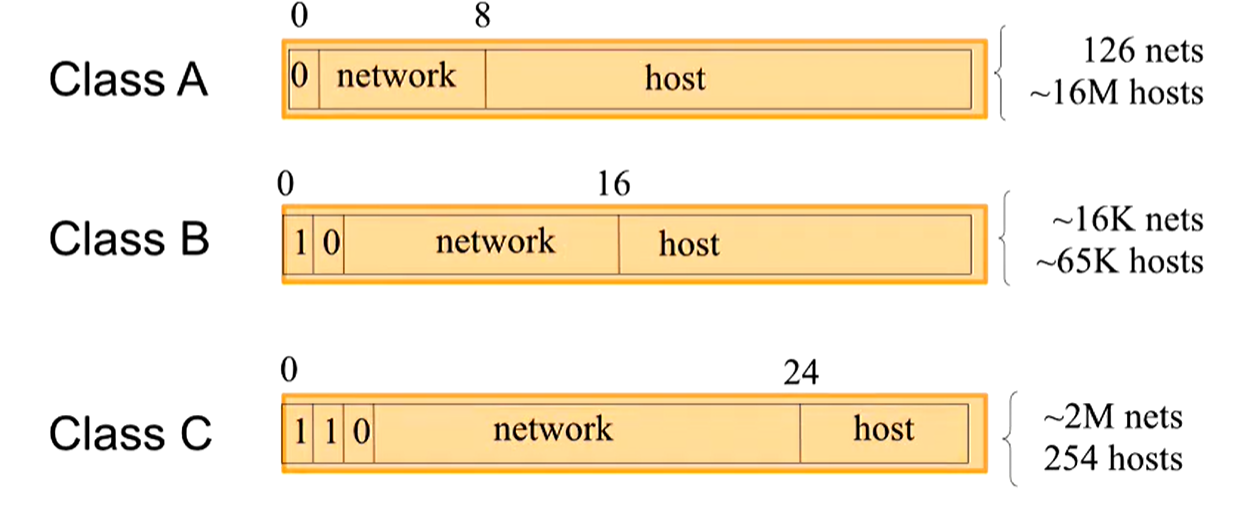 However, this classful structure created several issues, the biggest of which was that the majority of organizations needed Class B networks, despite there only being ~16,000 of them.
However, this classful structure created several issues, the biggest of which was that the majority of organizations needed Class B networks, despite there only being ~16,000 of them.
CIDR #
As a solution to classful addressing, CIDR (classless inter-domain routing) was invented. CIDR introduces a new hierarchy for address assignment:
- First, ICANN (Internet Corporation for Assigned Names and Numbers) acquired the remaining Class C networks.
- Next, ICANN gives out a chunk to RIRs (Regional Internet Registries), like ARIN.
- Then, larger organizations (mostly ISPs) acquire chunks from their responsible RIR.
- Finally, smaller organizations and individuals acquire individual IP addresses from ISPs.
At each step, the assigner adds a certain number of bits to reduce the number of available addresses for the next step.
IPv4 Header #
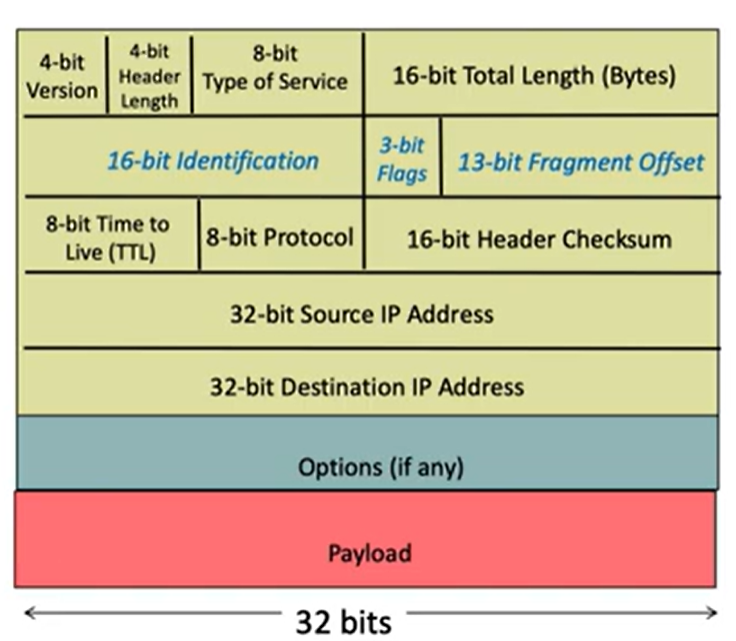
- Version (4b): equal to 4 for IPv4 and 6 for IPv6
- Header Length (4b): typically set to 20 bytes if options are not used
- Type of Service (8b): used to specify how the packet should be treated
- Datagram length (16b): number of bytes in the packet (maximum , or 65535)
- Identifier (16b): used for uniquely identifying groups of fragments of a single IP datagram (all fragments in the same group will have the same ID)
- Flags (3b):
- first bit is always 0
- second bit is 1 if packet can be fragmented, 0 otherwise
- third bit is 1 if packet isn’t the last fragment, 0 otherwise
- Fragmentation Offset (13b): offset (divided by 8-bit units) from original payload
- TTL (8b): discard packet if TTL=0
- Upper-layer protocol: next layer protocol to use (6 for TCP, 17 for UDP)
- Header checksum: used to verify header integrity (recomputed at each hop)
- Source IP (32b): where packet came from
- Destination IP (32b): where packet is sent to
Prefix Matching #
Given a routing table, how do we actually match a requested destination IP with its host?
The naive solution would be to just iterate through all of the table entries until a match is found, but this is very slow.
An improvement would be to create a prefix tree to take advantage of the binary tree structure enabled by bitstrings.
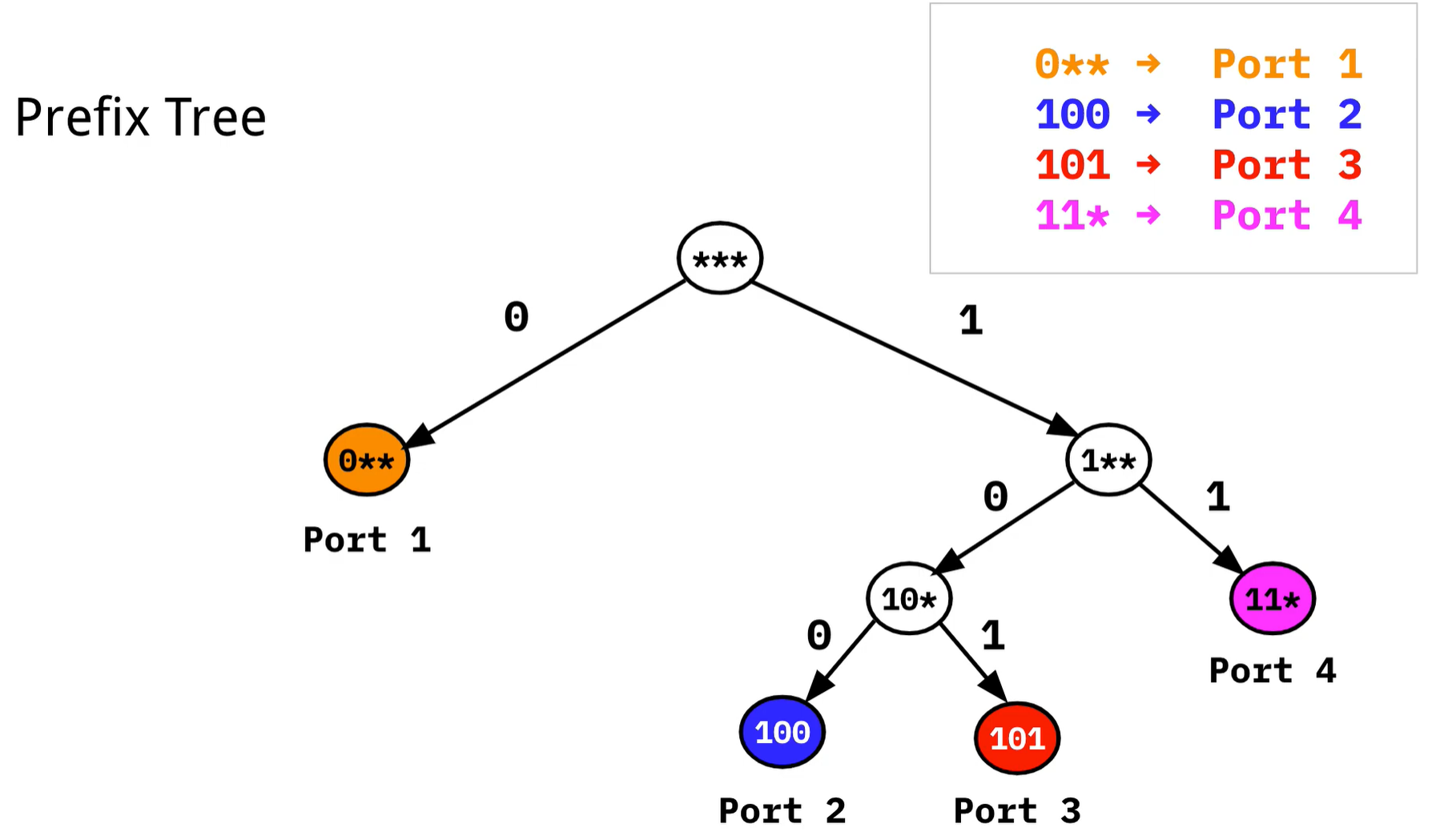
Realistically, due to the hierarchy of addressing multiple prefixes are often assigned to the same port (such as towards your ISP). Suppose in the illustration above that 0**, 101, and 11* all pointed towards Port 1. Then, the prefix tree can be compacted as such:
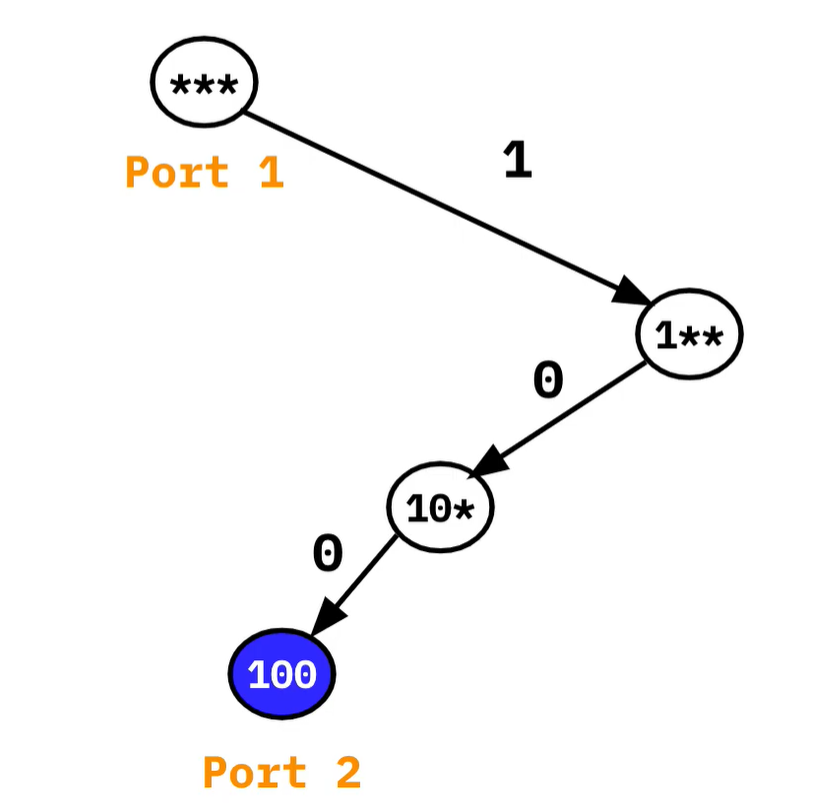
IP Fragmentation #
Maximum Transmission Unit (MTU)
Example #
Suppose we have an MTU of 500 bytes, and a 600-byte packet. Then, the packet will be split into two packets:
- the first one will have 500 byte total length (480bytes data + 20 byte header).
- Flag will be set to 001.
- Offset will be 0.
- the second one will have 120 byte total length (100 bytes data + 20 byte header).
- Flag will be set to 000.
- Offset is 480/8 = 60.
IPv6 #
The creation of IPv6 was motivated by the fact that one day we would run out of IPv4 addresses (32-bit, so 4,294,967,296 total). At this point we actually have already run out of IPv4 addresses, but you can buy some unused ones here for about $10,000-30,000 per /24 block.
As of today (Oct 2022), about 40% of internet users support IPv6 ( https://www.google.com/intl/en/ipv6/statistics.html), but it will take a very long time before we can completely deprecate IPv4.
Philosophy #
- Don’t make the network deal with problems: leave it to the end hosts
- Simplify while still allowing extensibility
Differences from IPv4 #
IPv6 is a more elegant, but unambitious protocol that mostly builds onto IPv4 with some minor improvements.
Here are the IPv4 and IPv6 headers side by side:
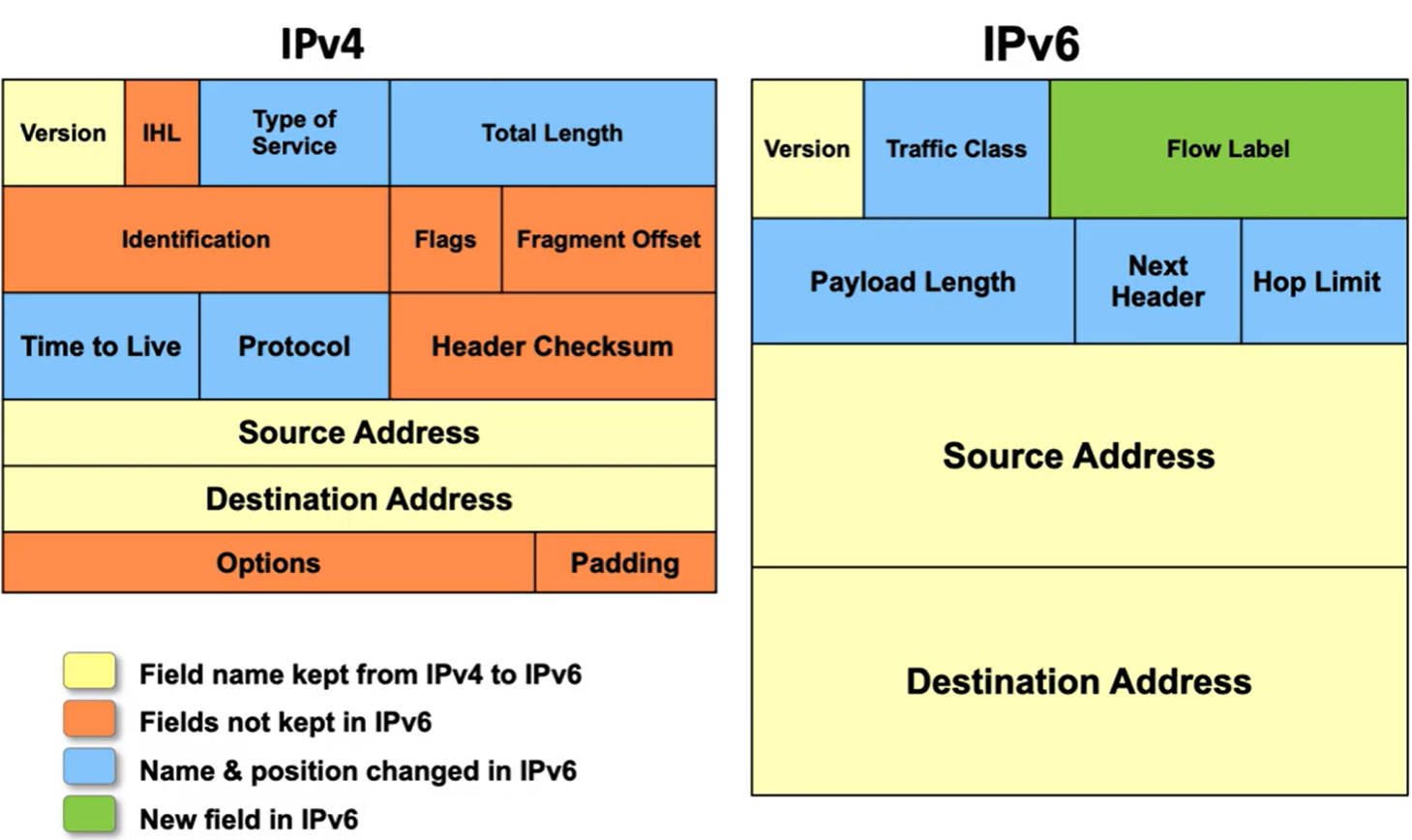
- More addresses: addresses, which is far more than we will probably ever need. The source and destination address fields are now 4x larger (128 bits instead of 32).
- Removed checksum: since the network is best-effort anyways, it’s excessive to make each router compute the checksum. Instead, we can just verify it at the end host.
- Removed length field: All IPv6 headers are the same length (40 bytes).
- Better options: Rather than the ambiguous “options” field, IPv4 uses the “next header” field to point to the next layer’s header.
- Each next header field has an ID corresponding to the protocol of the next header. For example, if Next Header = 6, the router will know to look for a TCP header.
- Next Headers can be chained/nested through multiple layers.
- Eliminated packet fragementation: Instead of fragmentation, use MTU Discovery, where hosts can send small exploration packets to determine the MTU of routers in the path and decide how big to make the packets. If a packet larger than the MTU is sent to a router, an error message will be sent back to the host.
- Added flow label: explicit mechanism to denote related packet streams: allow for multiple sessions and grouping of related packets
Security #
If an attacker can choose whatever they want to put in an IPv4 packet, they can exploit several vulnerabilities:
- change source and destination addresses to whatever you want: can claim to be a source you’re not
- choose different source address for every packet to avoid filtering
- cause destination to block a particular host
- set Type of Service to cause hosts to treat attack traffic as high priority
- most ISPs mitigate this by not allowing end hosts to set TOS
- send packets larger than MTU to create resource exhaustion
- traceroute: discover topology via TTL